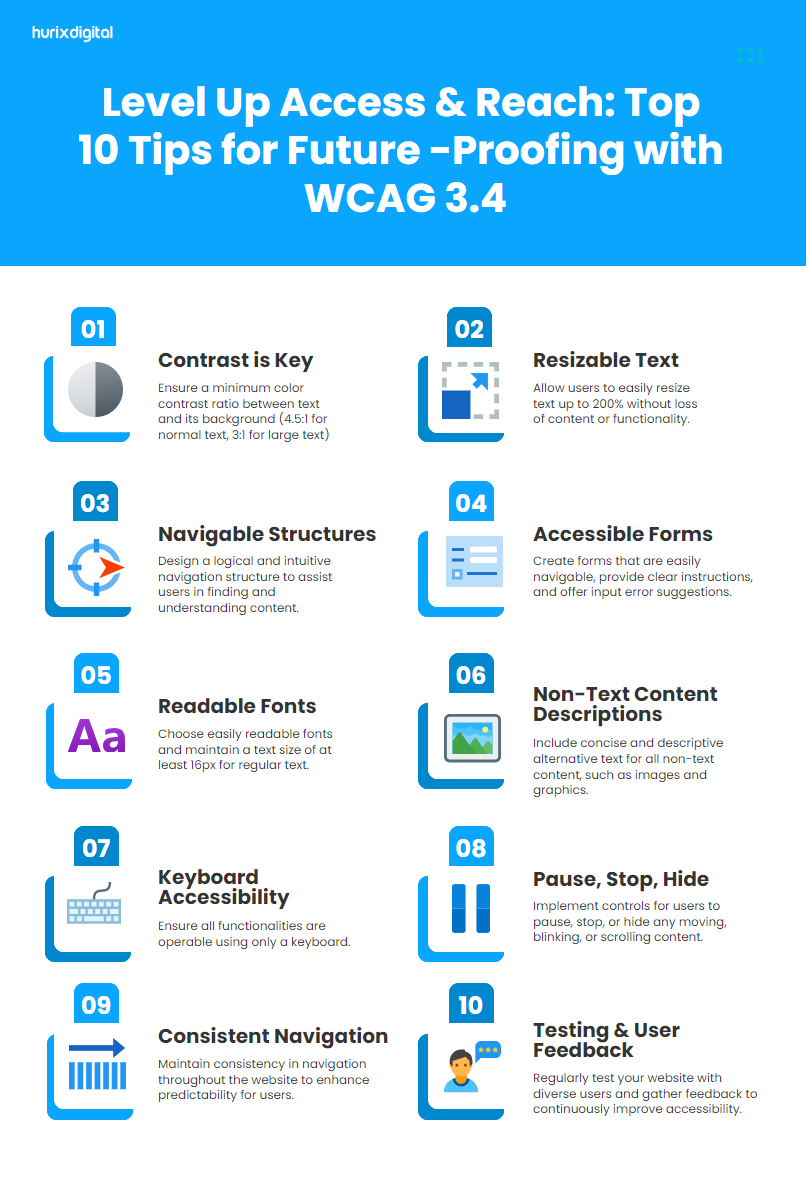Supercharge your digital presence! Explore our Top 10 Tips for Future-Proofing with WCAG 3.0: inclusive design, robust navigation, keyword accessibility, and more. Elevate access and reach with these essential strategies!
Elevate your digital presence with Hurix Digital! Implement WCAG 3.0 tips for future-proofing. Level up access and reach now! Contact us now to know more!

Understanding WCAG 3.0 for Enhanced Accessibility
In today’s digital age, inclusivity is crucial, and the Web Content Accessibility Guidelines (WCAG) 3.0 offer a comprehensive framework for accessible web content. These guidelines ensure that all users, including those with disabilities, can effectively engage with online platforms.
Key Principles of WCAG 3.0
WCAG 3.0 is founded on four principles: Perceivable, Operable, Understandable, and Robust. Each principle guides developers and designers in creating accessible websites.
- Perceivable: Information must be presented in ways that users can perceive, ensuring content is available to all senses.
- Operable: Users must interact with all interface elements and navigate the site without barriers.
- Understandable: Content and navigation should be clear and easy to comprehend, allowing users to follow along without confusion.
- Robust: Content must work across various platforms and devices, remaining accessible as technology evolves.
Importance of Color Contrast and Readability
Color contrast is crucial for accessibility. A minimum ratio of 4.5:1 for normal text ensures readability for users with visual impairments. Using legible fonts and maintaining a text size of at least 16px can significantly enhance user experience.
Navigational Ease and User Interaction
An intuitive navigation structure is vital. Users should easily locate content and understand how to interact with it. Consistent navigation throughout the site helps users predict where to find information, enhancing their experience.
Regular Testing and Feedback
Continuous improvement is key to accessibility. Regular testing with diverse user groups provides valuable feedback, enabling developers to identify and address potential issues. This ongoing process ensures compliance with WCAG and enhances user satisfaction.
Conclusion
WCAG 3.0 is a commitment to inclusivity. By focusing on accessibility, organizations can serve a broader audience and foster an online environment that caters to everyone. Embracing these guidelines enhances user experience, leading to greater engagement and satisfaction.




